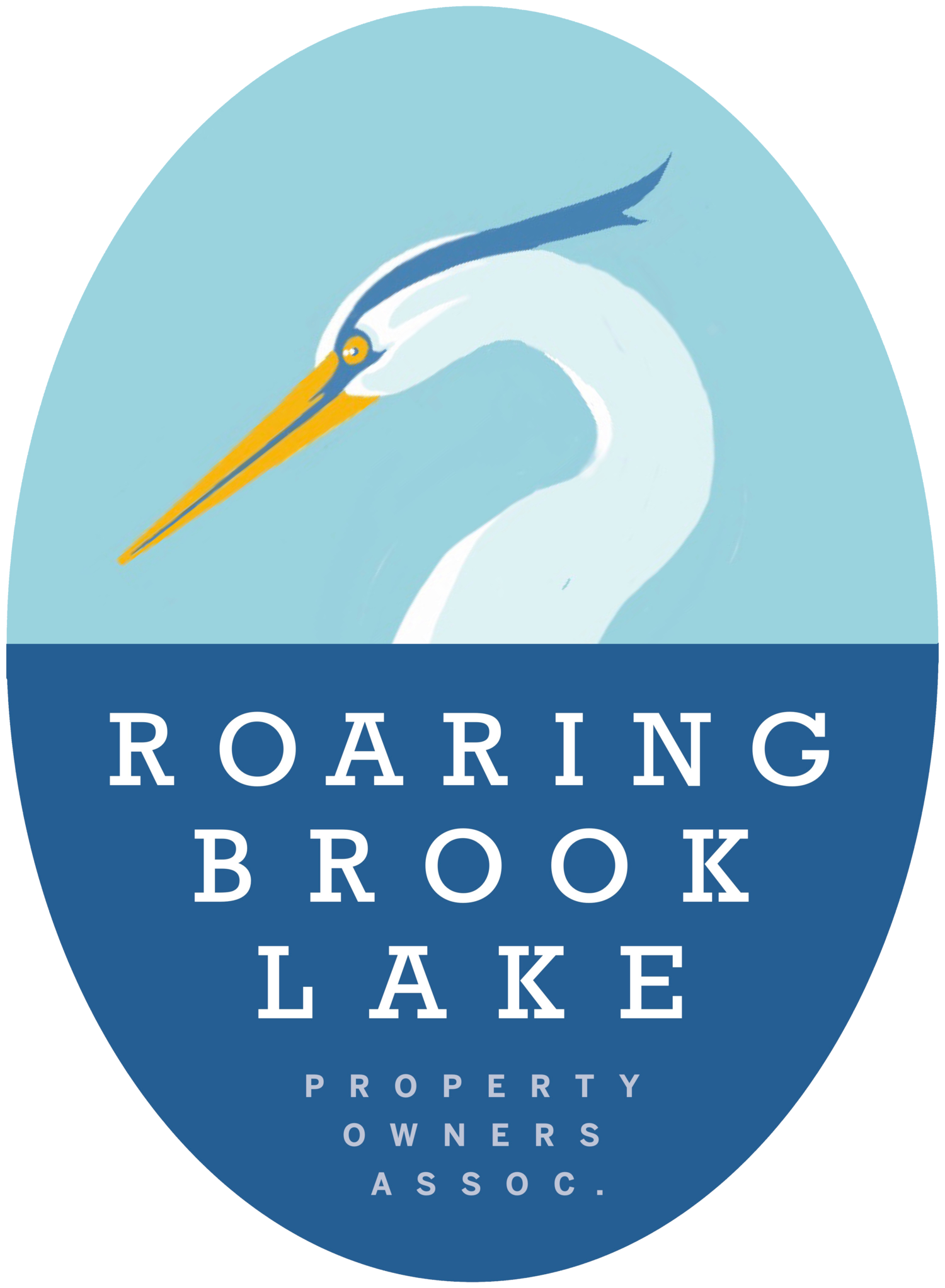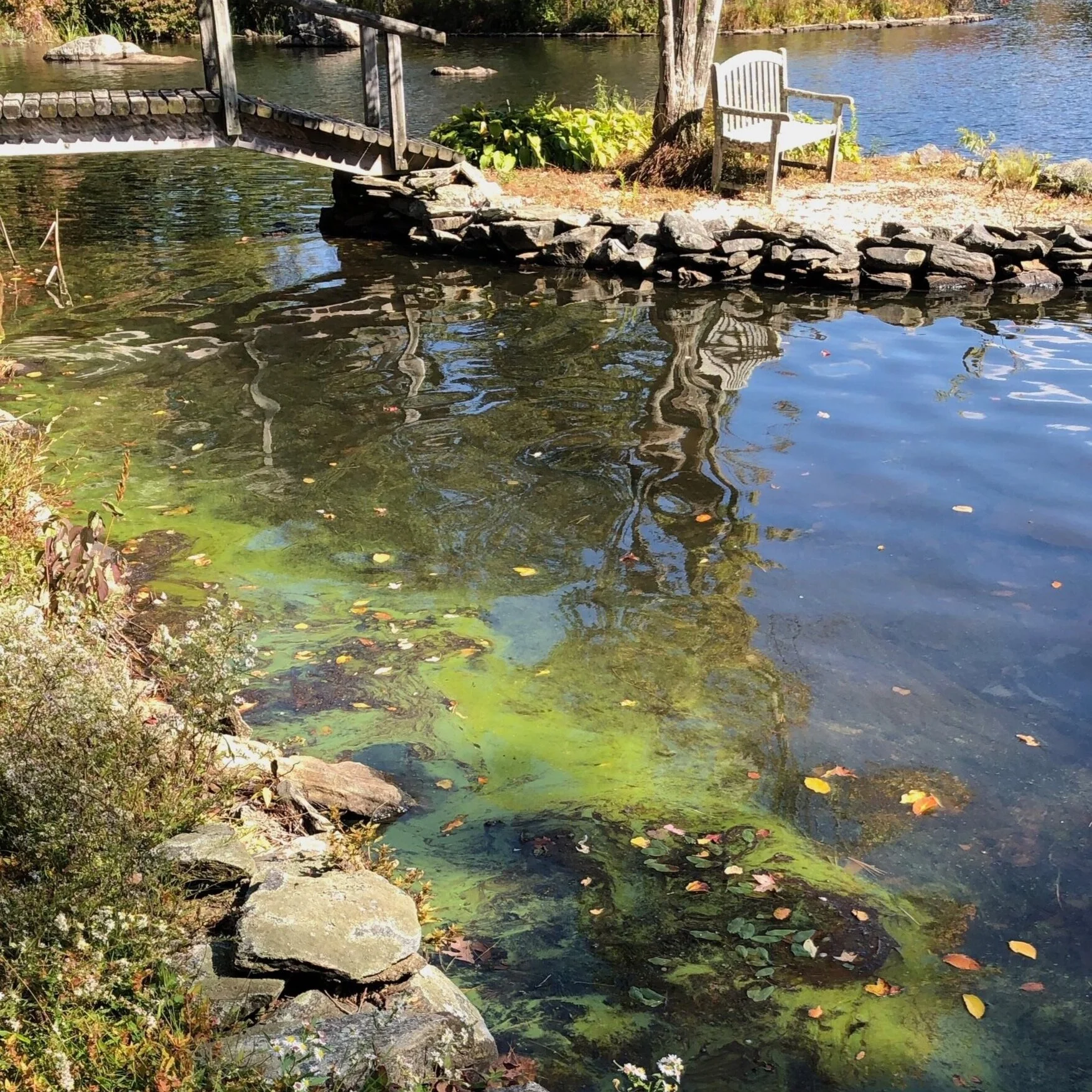Toxic Algae at RBL
Is toxic algae the same as blue-green algae? What is HAB?
Toxic algae, blue-green algae, and harmful algal blooms (HAB) all refer to the same tiny, single-celled organisms. The scientific name for them is cyanobacteria. Interestingly, they are technically not algae at all — they are bacteria. But unlike most bacteria, cyanobacteria have the green pigment chlorophyll and can make their own food, like a plant.
Is toxic algae always harmful?
No. Toxic algae are always in the water, usually in small concentrations. However, under certain conditions, especially when there are lots of nutrients in the water and the weather is hot, dry and still, they grow quickly and form large masses called harmful algal blooms (HAB). When the concentration is dense, blue-green algae can produce toxins, potentially harmful to people and the environment. There are several different toxins. Some affect the intestine and the liver and can cause nausea, vomiting, diarrhea and liver failure. Others can affect the nervous system and can cause headache and fatigue. In people who have sensitive skin, the toxins may produce eye and skin irritation or rashes. Most of these symptoms are not very specific, so they are often not reported.
OK, we have a problem. What can we do about it?
In the short term, avoid toxic algae blooms. Mostly, the toxins of blue-green algae must be swallowed to be a problem. Therefore, do not allow small children to play in shallow water that is not clear. Keep pets out of these areas. Do not drink the lake water. Be aware that some people can develop skin irritation or rashes from skin contact with toxins.
For the most part, it is safe to swim in areas of the lake that are clear. If you’re not sure, use this simple guideline: When in Doubt, Stay Out.
In the long term, we can’t easily change the weather, but we can change the nutrient load entering the lake. Each one of us can make a difference.
Use only phosphorus-free fertilizers. Check the bag for a set of three numbers showing the percentage of nitrogen, phosphorus and potassium. Buy a bag with a "0" in the middle and be mindful that organic fertilizers may not list the phosphorus content. Use fertilizers sparingly.
Use phosphate-free laundry and dishwasher soap.
Plant a buffer zone of deep rooted grasses, shrubs, or natural vegetation at the shoreline. Do not cut down trees in the watershed of the lake. Shrink your lawn.
Have your septic system inspected and pumped regularly, ideally every 2-3 years. Make repairs promptly and consider replacing outdated or ineffective systems.
Minimize hardscapes and lawns on your property. Plant a rain garden to catch the runoff from your roof or driveway.
Don’t dump yard waste in wetlands; wetlands are the filters for our lake water. Compost or properly dispose of leaves, lawn clippings, garden waste, goose poop, etc. Do not dispose in the lake or wetlands, please!
How do we know that there is toxic algae in roaring brook lake?
In our lake, since 2009, the New York State Department of Environmental Conservation (DEC) has run tests for cyanobacteria and their toxins through our participation in Citizens Statewide Lake Assessment Program (CSLAP). In addition, the Putnam County Department of Health (DOH) has tested for cyanotoxins at our public swimming beaches since 2010. There were a few confirmed cyanobacteria blooms in RBL from 2009 to 2016 and most were negative for toxins. However, in 2017, the DEC confirmed that five different samples, taken from early June through mid-September, were cyanobacteria. Three of the five were producing high levels of toxins. In 2018, three of seven confirmed HAB samples were positive for toxins.
We are able to submit samples to the DEC through our participation in the CSLAP. Thank you to our neighbors and volunteer samplers: Bill Brigham, Sam Lee (pictured) , and Ina Cholst.



